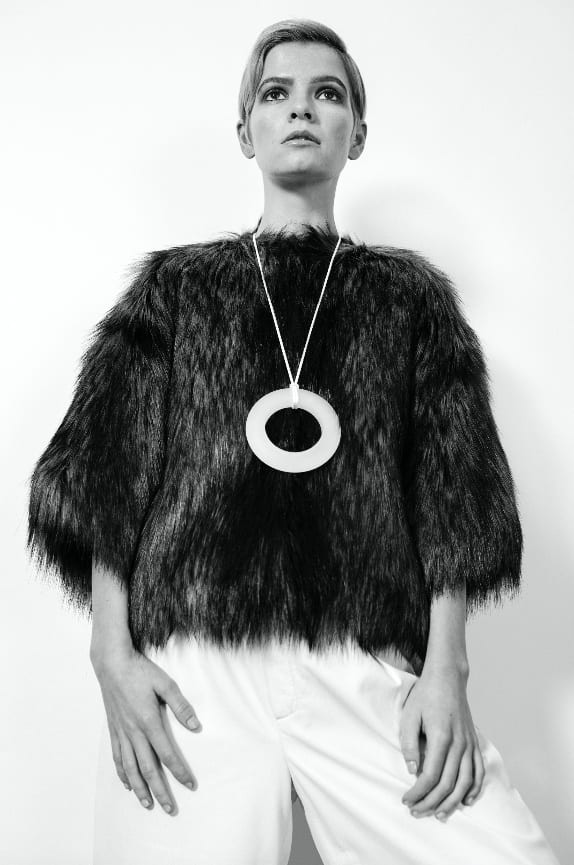Louisa Guinness Gallery first approached Mariko Mori around the time of her solo show at the Royal Academy in London, December 2012. The exhibition showed Mori’s work at its best: diverse, futuristic, steeped in mysticism and shimmering in opalescence.
In early discussions, it quickly became clear that medium was a central concern for the artist when considering her jewellery designs. Her first project, Ring, was realised in Lucite, an acrylic-based resin mixed with opaline to give it a unique colour.
Lucite was uniquely developed in this form by Mori and is used in various guises throughout her sculptural work for its ethereality. The Lucite forms a solid ring that can be worn suspended from the neck or on a slim wrist. Its circular form is a familiar motif in Mori’s work, representing universality, unity or ‘oneness’. It is designed to perfect thickness - inhabiting the last moment before the Lucite becomes completely translucent. Instead, the effect is of an iridescent form that changes the intensity of its glow, depending on the surrounding colour. ‘Mother of pearl inspired me to design the jewellery,’ Mori explains. ‘Louisa facilitated the realisation of my vision by skilled goldsmiths.’
Ring was an extension of a monumental work of the same name created as a site-specific sculpture in Brazil by the Faou Foundation, Mori’s not for-profit cultural and educational programme that works to promote awareness of, and respect for, the earth’s natural treasures.

Ring Pendant & Bracelet, 2013, Photographed by Alexander English
Mori’s later jewellery work Planets also employed a circular form, this time intended to reference not only a planetary ‘orbit’ but also the Jomon understanding of time as circular (the Jomon was an early Mesolithic-type culture in Japan). The work drew on Mori’s 2004 installation Transcircle, made up of nine luminescent Corian stone pillars placed in a circle. Each stone glowed at various intervals and in various colours, according to the movement of nine planets in our solar system. The considered placement of each pearl and bead on its white gold orbit suggests order in an infinitely variable universe. Worn around the neck, hanging from the ears or pinned above the heart, Planets, like Transcircle, encourages a personal reflection on our place in the cosmos.
Medium was again central to the Planets project: necklace, brooch and earrings all incorporate South Sea and Akoya pearls in varying arrangements. Each pearl was meticulously sourced and chosen by the artist herself for its quality and lustre. Before selecting the final pearl, Mariko would roll each pearl up and down her palm with her index finger, carefully examining it for deficiencies. They were shipped from New York to London before the construction of the necklace could begin in Hatton Garden.
Whilst the overall effect of these works is serenity, the workshop process was time consuming, and at times frustrating and complex. They show artists’ jewellery at its very best – the perfect union of artistic vision, interpretation and technical prowess. The necklace is remembered by its makers, Smith and Harris, as a feat of engineering. Each pearl and bead had to be drilled; a difficult job in itself, but even more so when breakages (a common occurrence) meant waiting for the next ‘harvest’ and a replacement batch of pearls to come in from New York.
A thin wire was then inserted through hollow gold piping, through the pearl and through a connecting pipe on the other side. The work demanded a plethora of accuracies. If the tubing was too thick it would look clunky. Too thin and the circle distorts when the work is taken on and off. If the drilled hole is too wide, the pearl will move. Too thin and you have to drill again. Typically, just as repetition had perfected the process, the necklace edition of five had sold out!

Planets Earrings, 2013, Photographed by Alexander English
